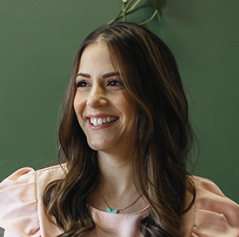Feeling stressed and overwhelmed are commonly experienced when you feel a lack of control. In an attempt to regain control, you may find yourself staying busy with tasks or activities, yet never truly addressing the root cause of your stress and overwhelm.
You respond to the feelings by doing or avoiding rather than approaching. This response, while seemingly productive, often leaves the underlying issues unaddressed and the feelings of stress and overwhelm unresolved.
Consider how this approach has impacted you in the past. You might have tackled countless tasks, only to find that the stressors still lingered. This avoidance behavior can amplify your feelings of frustration and anxiety, making you feel even more out of control.
For instance, last week I spent two hours cleaning out my closet. I meticulously organized items into neat piles and labeled bags for donation. It felt productive at the time, but I was still overwhelmed by numerous responsibilities in multiple areas of my life.
When I finished cleaning, those stressors remained, fueling further stress and overwhelm. I had done nothing to take control of what I was experiencing; I looked away (to my closet) rather than looking in.
As I spent time with my kids before bed that evening, I felt disconnected and stressed. I felt stuck. It wasn’t until my children were asleep and the house was quiet that I sat down to confront my inner overwhelm bubbling to the surface.

When I finally looked within, I reminded myself to explore slowly rather than flood myself with judgment (my default).
Okay, so this is where I pulled out Dr. Carolyn to help normal Carolyn (yup, even I need to talk to myself). Carolyn wanted to make task lists, but Dr. Carolyn said this was bigger than a list.
There was more than just tasks to check off. So here’s what I explored within myself (on paper in my journal, but without creating any task lists):
- How can I make this easier for myself? This first question created a softening within me—the permission to let go of doing things the hard way.
- What expectations am I putting on myself? Here, you focus on your own expectations and not those of others. Are your expectations realistic or incredibly lofty, creating a sense of never meeting them?
- What is outside my control? How can I accept or let go of these things?
- What is within my control? This is where I want to focus more energy.
I ended this journaling session with positive visualization. Instead of feeling stuck in paralysis, I pictured myself a month from now—what did I want to look and feel like? How did these things that were stressing me out turn out? Really envision this—imagine you’re telling a story. Use this vision to help anchor yourself and shift your daily actions to align with the answers you found from your questions.
Your Path Forward
Reflect on how you handle stress and overwhelm. Are you busying yourself with tasks without addressing the real issues? This approach only masks the problem and often leaves you feeling more out of control.
Take a moment to pause and look within. Ask yourself the questions I posed: How can you make things easier for yourself? What unrealistic expectations are you placing on yourself? What can you let go of that is outside your control? And what can you take charge of?
Visualize where you want to be a month from now. Use that vision to guide your actions and align them with the insights you’ve gained. By doing so, you’ll start to regain control and reduce your feelings of stress and overwhelm.
Take action now. Pause, reflect, and redirect your efforts towards what truly matters. Let’s move forward together, finding control and peace amidst the chaos.
All my love,
Dr. Carolyn


